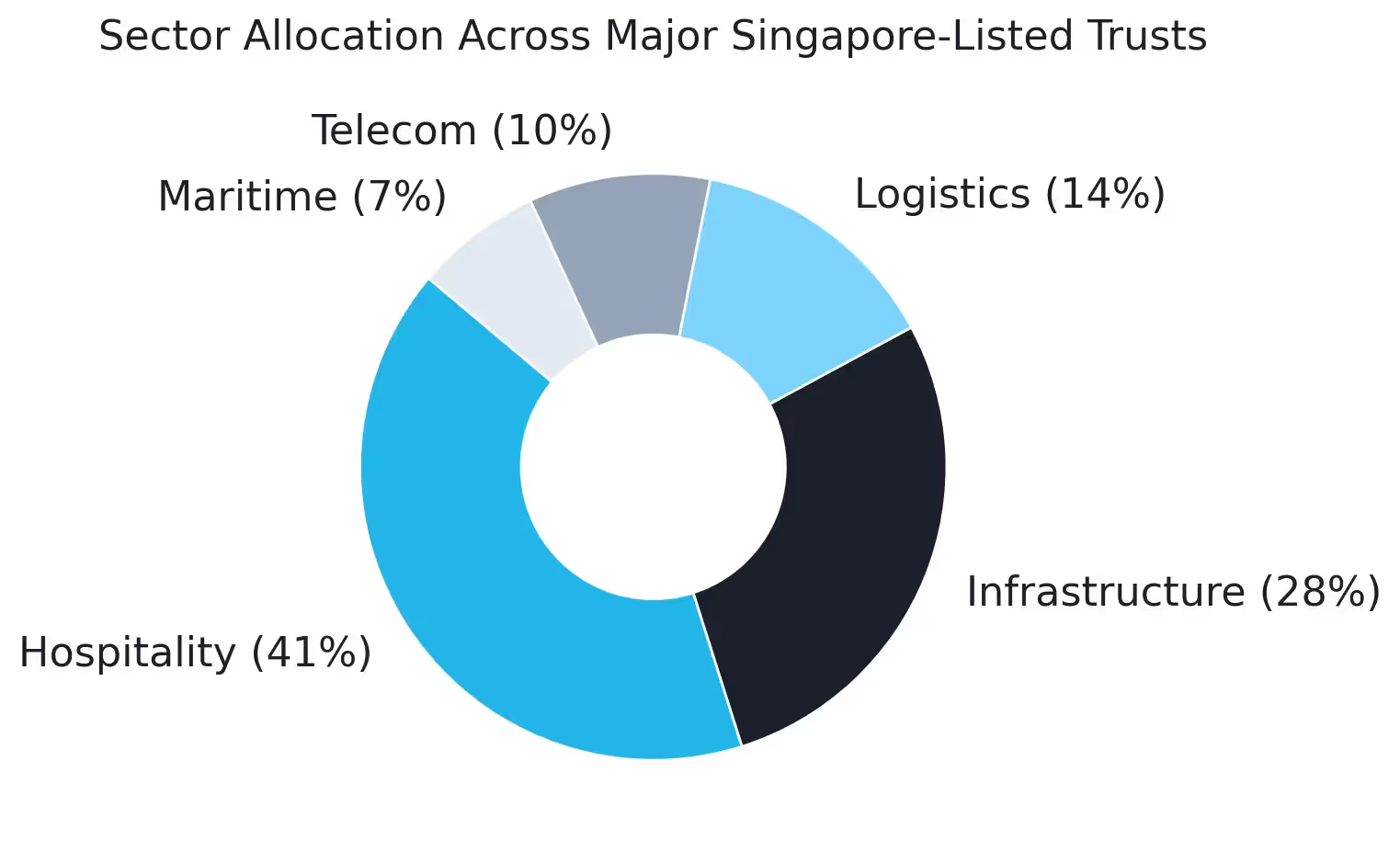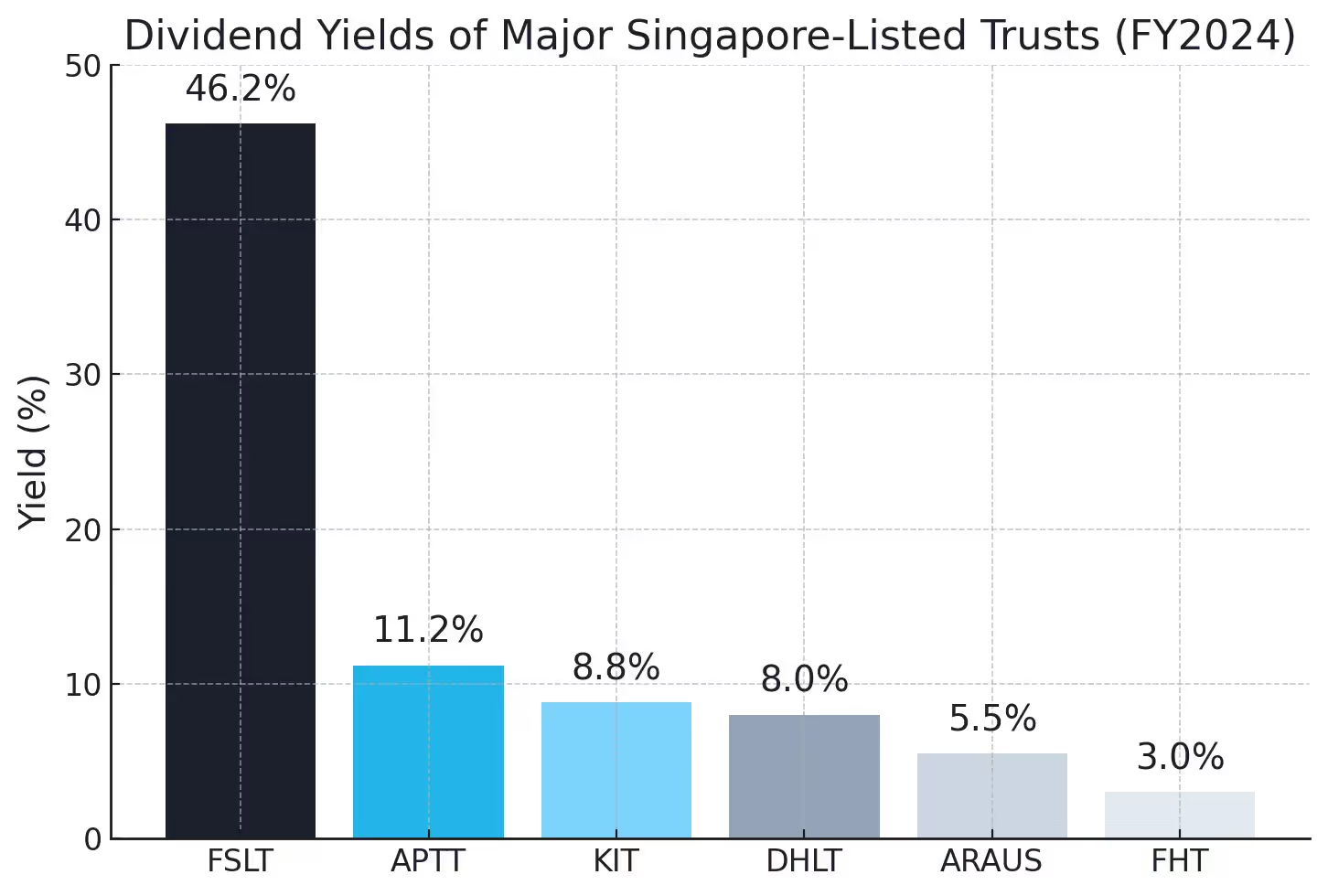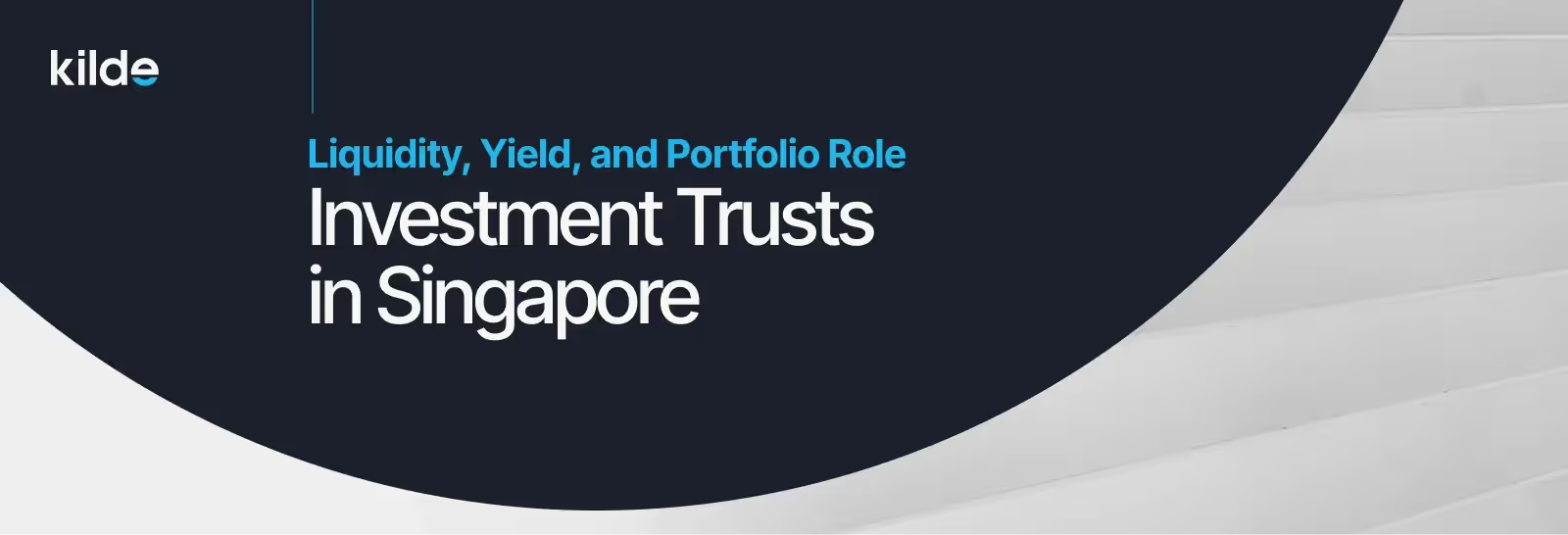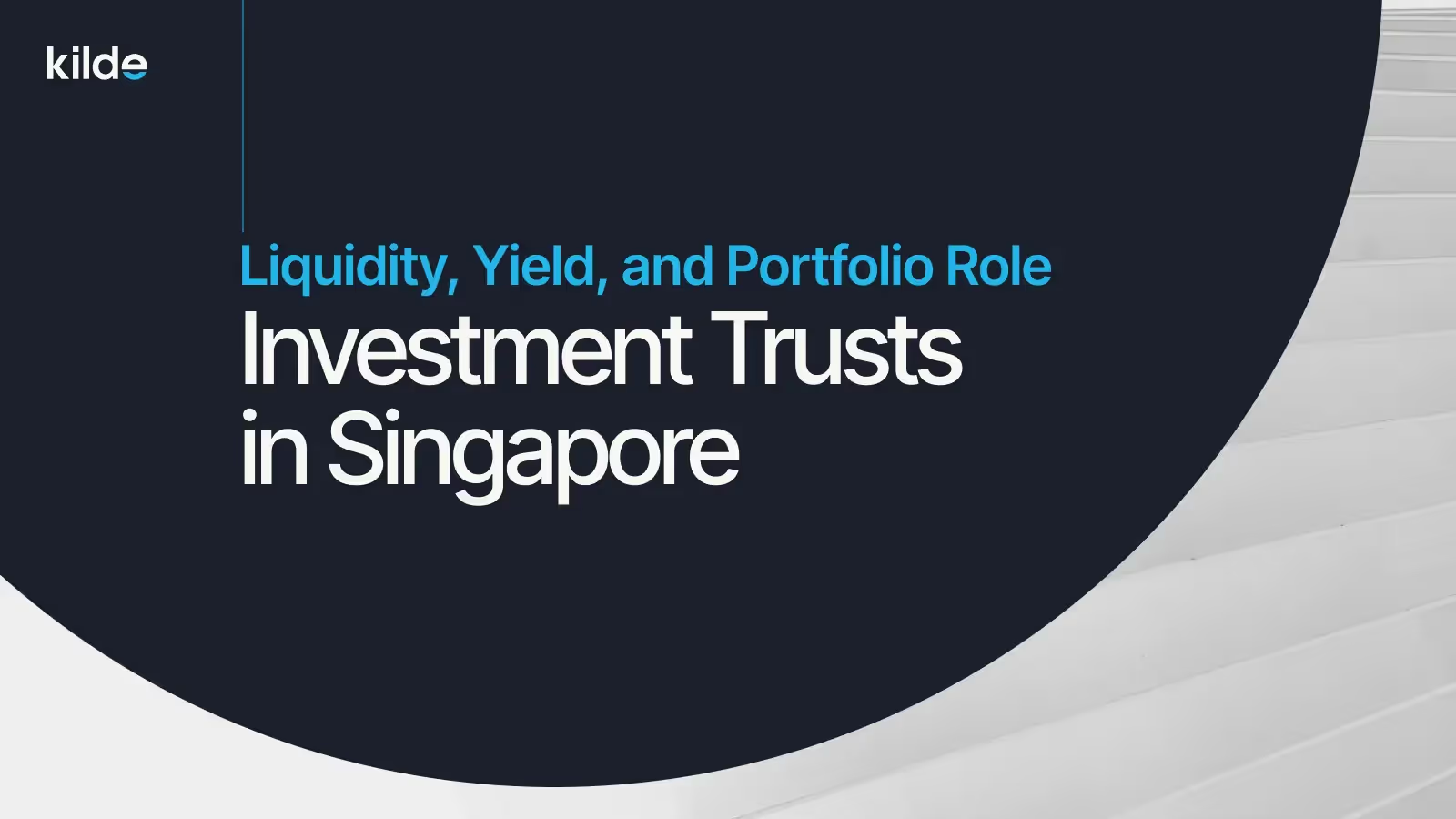Why Investment Trusts Are Gaining Attention in 2025
In today’s high-rate, post-inflation market, income-focused investors in Singapore are seeking stable, yield-generating alternatives.
Listed investment trusts - spanning infrastructure, shipping, telecom, and hospitality - offer consistent payouts (often 5–12%) alongside liquidity and transparency.
Unlike unit trusts, which are open-ended mutual funds typically sold through banks, investment trusts are SGX-listed vehicles that trade like stocks. Their closed-ended design supports better price discovery and disclosure.
Backed by tangible assets and recurring cash flow, these trusts are quickly becoming foundational tools for income-seeking portfolios.
What Is an Investment Trust?
An investment trust in Singapore is a listed structure that holds income-producing assets and distributes earnings to unitholders. These may include real estate investment trusts (REITs) and business trusts - for assets like infrastructure, ships, or broadband networks.
While REITs focus exclusively on real estate, business trusts and other investment trusts go beyond property into telecom, energy, logistics, and more.
For a deep dive into REITs specifically, see our Guide to Investing in Singapore REITs
Key characteristics of Singapore investment trusts:
- Trust fund structure: Assets are held by a Trustee-Manager, not a company
- Distributable cash flow: Trusts can pay from operating cash flows, not just accounting profits
- High payouts: Many distribute 90% or more of net income
These structures are sometimes mentioned alongside more familiar options like unit trusts, but they are fundamentally different in structure and operation.
Unit trusts are open-ended mutual funds, while investment trusts are listed, closed-ended vehicles regulated under SGX with higher liquidity and disclosure standards.
However, unlike unit trusts, which are typically mutual funds, investment trusts are traded on the SGX and offer more transparency and liquidity.
Business trusts in Singapore operate under a looser regulatory framework than REITs, but often serve similar goals: turning stable cash flows from real assets into regular distributions.
Some trusts (e.g., APTT) are structured more like operating businesses but still pay consistent dividends.
Investors should evaluate the cash generation and distribution methods of each trust. Some trusts, like KIT, depend on fixed contracts, while others, such as FSLT, rely on market-sensitive operations.
{{cta-component}}
Singapore Investment Trusts: Sector Overview
Listed investment trusts in Singapore cover a broad range of sectors, including utilities, infrastructure, logistics, broadband, shipping, and hospitality.
Each of these segments is shaped by distinct economic fundamentals, from the resilience of regulated contracts to the cyclicality of global transport and tourism.
Note: Yield data based on FY2024 dividends per share and current unit prices.
These trusts do not merely differ by geography - they differ by income profile, risk exposure, economic correlation, and regulatory treatment.
The result is a uniquely versatile toolkit for investors looking to diversify across sectors without leaving the comfort of a Singapore-listed instrument.
Visualising the Market
Sector Allocation Across Major Trusts

Breakdown:
- Hospitality (FHT, ARAUS): 41%
- Infrastructure (KIT): 28%
- Logistics (DHLT): 14%
- Telecom (APTT): 10%
- Maritime (FSLT): 7%
Hospitality, especially with the resurgence of global travel, continues to be the leading sector by value.
Infrastructure is a close second, with logistics rapidly gaining ground, fueled by the boom in e-commerce and reshoring initiatives across Asia.
Top-Yielding Trusts

- FSLT: 46.2%
- APTT: 11.2%
- KIT: 8.8%
- DHLT: 8.0%
- ARAUS: 5.5%
- FHT: 3.0%
While FSLT's yield stands out, it's worth noting this reflects a special payout due to exceptional chartering conditions. More typical high-yield profiles fall in the 7–11% range, especially in telecom and infrastructure.
{{cta-component}}
Sector Deep Dive: Income Profiles, Risks, and Catalysts
Trust Comparison Table — Yield, Risk, and Fees
Each trust plays a different role within an income portfolio.
Some function like fixed-income proxies; others behave more like cyclical equities with dividend overlays.
Choosing the right mix requires understanding not just what they yield—but why they yield that much.
Keppel Infrastructure Trust (KIT SP)
KIT anchors many income portfolios because of its predictable cash flows and ties to regulated utilities.
Its inflation-linked revenue contracts offer a natural hedge for rising cost environments.
Daiwa House Logistics Trust (DHLT SP)
Backed by Japan's e-commerce engine and tight warehouse supply, DHLT provides reliable income and geographic diversification.
Its tenant renewal rates remain among the highest in the sector.
Asian Pay Television Trust (APTT SP)
APTT's broadband segment continues to grow, even as legacy cable TV erodes.
The trust's pivot to digital has helped mitigate what could have been a terminal business model risk.
First Ship Lease Trust (FSLT SP)
Shipping's volatile nature makes FSLT a tactical rather than strategic allocation.
That said, during high-rate windows, it can dramatically outperform any fixed-income instrument.
Acrophye Hospitality Trust (ARAUS SP)
Operating in the U.S., ARAUS is well-positioned to benefit from both domestic travel demand and "bleisure" recovery.
Its midscale, limited-service format also supports margin resilience.
Frasers Hospitality Trust (FHT SP)
FHT plays the long game. With properties in London, Tokyo, and Singapore, it offers exposure to premium hotel markets.
Even modest recovery in international business travel could re-rate its income potential.
Global Comparison
Singapore trusts compare favourably against global income assets.
BDCs in the US offer high yields but come with U.S. withholding taxes and market-specific risks.
UK REITs trade at NAV discounts but are often property-heavy.
Singapore's vehicle diversity, combined with tax neutrality and Asian exposure, makes it uniquely attractive.
How HNWIs Can Use Trusts in Income Portfolios
3-Component Framework
- Core Income Layer
- Keppel Infrastructure Trust (KIT)
- DHLT (logistics)
- Tactical High-Yield Layer
- APTT (broadband)
- FSLT (shipping)
- Diversification & Growth Layer
- ARAUS (US hotel recovery)
- FHT (global travel play)
Portfolio Integration Benefits
- Defensive assets offset cyclical ones
- FX/geography diversification
- Liquidity via SGX listing
- Higher average yield with manageable risk
A portfolio constructed using this layered model achieves both resilience and opportunity capture.
For example, core infrastructure income can fund liabilities, while cyclical exposure (like FSLT) offers upside during favourable conditions.
{{cta-component}}
Complementing Public Income with Private Credit
For some investors, listed trusts are only part of the yield equation.
To enhance diversification and access additional income streams, private credit can play a supporting role.
Kilde offers access to private credit - senior secured loans issued to non-bank lenders - targeting 11-13.5% annualised yields with monthly payouts. These are typically receivables-backed and structured for downside protection, offering an income alternative outside public markets.
Final Thoughts
Singapore's investment trust market is a fertile ground for income generation.
With listed trusts offering global exposure across infrastructure, logistics, digital services, and hospitality, investors can build a multi-sector portfolio designed for real-world yield.
When combined with private credit from platforms like Kilde, the result is a robust, cash-flow-oriented strategy tailored for HNWIs in 2025 and beyond.
These instruments, when thoughtfully combined, can contribute to achieving income objectives by offering a balanced approach to liquidity, diversification, and performance.
Disclaimer Notice
This page is provided for general informational purposes only and does not constitute legal, financial, or investment advice. Please refer to our Full Disclaimer for important details regarding eligibility, risks, and the limited scope of our services.

















